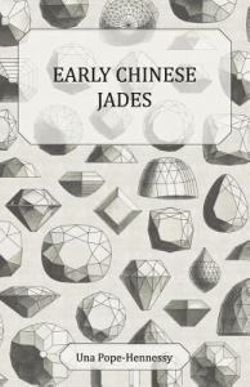They may have derived their belief in the life-giving properties of jade from the Elamites, or have come to attach a magical value to its presence from the Babylonian miners, but for neither of these peoples was it the vehicle of supernatural beliefs, and, penetrate as far back as we may into pre-history, we cannot find a time in China in which jade was not used for religious purposes. What perhaps emphasises the peculiar position of jade in Chinese culture is the fact that other early peoples used jade, although for them it had no significance greater or even as great as gold or pearls. Jade was dug and worked in many parts of Europe. Hatchets have been found in Switzerland, nephrite celts in South Italy and France, Germany, Dalmatia, and Hungary. Jade celts, too, were discovered by Schliemann at Hissarlik, but by no people save the Chinese has jade been made the nucleus and the shrine of a civilisation-although its use was distributed in Turkestan, Persia, Siberia, India, Lake Baikal, and Japan, and to a minor degree the substance was prized by most Asiatic peoples. It is only during the last two decades that collectors have begun to realise the enormous importance of jade. Dr.
Laufer broke new ground when, in 1912, he published his great work,xde, A Study in Chinese Archzology and Religion. His object in writing this book was rather ethnological than artistic. He himself calls it a contribution to the l Anthropology, Encyclopzdia Britannica...



Share This Book: